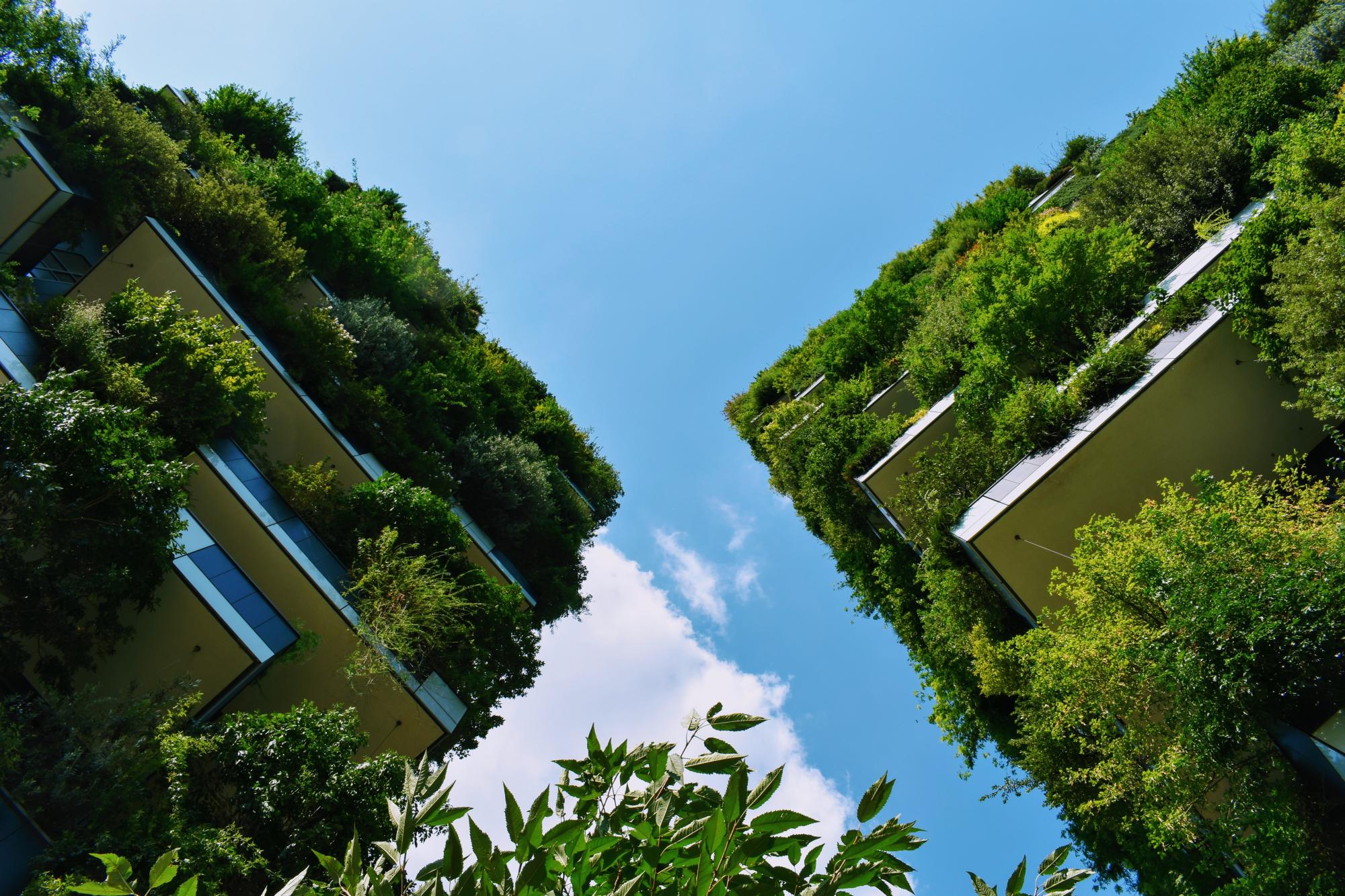In 2016 the Environmental Protection Division of Hannover's Department of Environment and Urban Environment started a common pilot project, KlimaWohL, with Bothfelder Kamp GmbH & Co. KG and the Gundlach Group. The building project in Hanover-Bothfeld, formerly called “Hilligenwöhren”, was renamed to “Herzkamp”. By 2021, the family company Gundlach will build approx. 300 terraced houses, rental and freehold apartments. The aim of the project is to implement a new residential area where the researchers of KlimaWohL can systematically test the climate adaptation strategy of Hanover. The new residential area that aims to be an innovative example of climate-adaption for other cities will be equipped with extensive green surfaces and will pay attention to protect the natural environment and species. (Reference 1, 3). In 2018, planting the edge of the forest was started, wherein a tiered 20m wide border consisting of shrubs and trees were planted between the forest and the residential area. Construction of the rental apartments was started and by 2019, the row houses and semi-detached houses have started to be sold. The shell has been completed and the interior work has started. By 2022, overall completion of the project is foreseen.
Overview
Nature-based solution
- Nature on buildings (external)
- Green roofs
- Green walls or facades
- Grey infrastructure featuring greens
- Alley or street trees and other street vegetation
- Green parking lots
- Parks and urban forests
- Large urban parks or forests
- Pocket parks/neighbourhood green spaces
- Community gardens and allotments
- Community gardens
- Other
- Green areas for water management
- Sustainable urban drainage systems
Key challenges
- Climate action for adaptation, resilience and mitigation (SDG 13)
- Climate change adaptation
- Green space, habitats and biodiversity (SDG 15)
- Habitat and biodiversity conservation
- Green space creation and/or management
- Environmental quality
- Air quality improvement
- Waste management
- Regeneration, land-use and urban development
- Regulation of built environment
- Promote natural styles of landscape design for urban development
- Economic development and employment (SDG 8)
- Real estate development
- Employment/job creation
Focus
Project objectives
Implementation activities
Climate-focused activities
Climate change adaptation:
- Increase or improve urban vegetation cover to help reduce outdoor temperature
- Create or improve outdoor spaces to help people escape from urban heat
- Implement green walls or roofs to lower indoor temperature and provide insulation
- Implement sustainable urban drainage infrastructure (e.g. to make space for water)
- Increase the use of climate-resilient plant species (resistant to drought, fire, and pests)
Biodiversity conservation or restoration-focused activities
Biodiversity conservation:
- Protect and enhance urban habitats
- Preserve and strengthen existing habitats and ecosystems
- Promote environmentally-sound development in and around protected areas
- Create new habitats
- Reduce negative impacts and avoid the alteration/damage of ecosystem
- Protect species
- Undertake specific measures to protect species
- Means for conservation governance
- Raise public awareness
- Public engagement
- Create and use scientific knowledge for conservation
- Capacity building
- Other
Main beneficiaries
- Local government/Municipality
- Private sector/Corporate/Company
- Researchers/University
- Citizens or community groups
Governance
Management set-up
- Co-governance with government and non-government actors
Type of initiating organisation
- Regional government
- Public sector institution
- Private sector/corporate actor/company
- Researchers/university
- Other
Participatory approaches/ community involvement
- Dissemination of information and education
- Consultation (e.g. workshop, surveys, community meetings, town halls)
Details on the roles of the organisations involved in the project
Project implemented in response to ...
Financing
Total cost
Source(s) of funding
- Public regional budget
- Corporate investment
Type of funding
- Earmarked public budget
- Direct funding (grants, subsidies, or self-financed projects by private entities)
Non-financial contribution
- Provision of expertise
- Private sector (businesses, financial institution)
- Other
Impacts and Monitoring
Environmental impacts
- Climate change
- Lowered local temperature
- Reduced emissions
- Strengthened capacity to address climate hazards/natural disasters
- Environmental quality
- Improved air quality
- Improved waste management
- Water management and blue areas
- Improved stormwater management
- Reduced risk of damages by drought
- Green space and habitat
- Increased green space area
Economic impacts
- Increase of green jobs (e.g. paid employment positions)
Socio-cultural impacts
- Social justice and cohesion
- Improved liveability
- Improved access to urban green space
- Increased opportunities for social interaction
- Education
- Increased support for education and scientific research
- Increased knowledge of locals about local nature
Type of reported impacts
Presence of formal monitoring system
Presence of indicators used in reporting
Presence of monitoring/ evaluation reports
Availability of a web-based monitoring tool
References
2. Landeshauptstadt Hannover. (2012). Anpassungsstrategie und Maßnahmenprogramm 2012 – 2016, Leben mit dem Klimawandel - Hannover passt sich an: Schriftenreihe kommunaler Umweltschutz – Heft 53. Hannover: Landeshauptstadt Hannover, p.32.
3. Source link. (no date). Leuchtturmprojekt Wohnquartier „Herzkamp“ in Hannover-Bothfeld. [online] Available at: Source link. [Accessed: 08.07.2020].
4. Landeshauptstadt Hannover. (2016). Stadtentwicklungskonzept „Mein Hannover 2030“. Hannover: Landeshauptstadt Hannover.
5. Source link. (no date). Masterplan 100% für den Klimaschutz. [online] Available at: Source link. [Accessed: 08.07.2020].
6. Source link. (no date). Die klimaangepasste Stadt im Fokus. [online] Available at: Source link. [Accessed: 08.07.2020].
